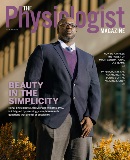Breaking Away
Benjamin Miller, PhD, loves cycling and science—which allow him to challenge his body and mind.
By Kristen De Deyn Kirk
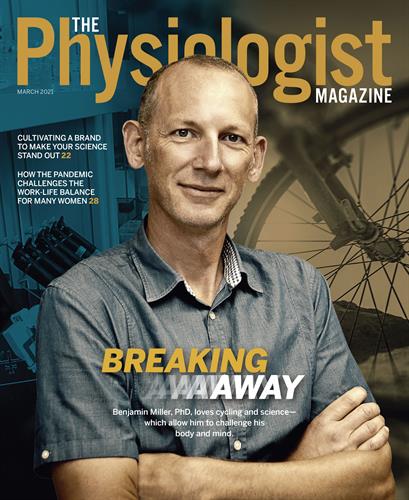
Benjamin Miller, PhD, was in sixth grade when he first bought a bike, a Schwinn World Sport. The $200 investment of his own money came after seeing his parents, once avid runners, turn their attention to cycling. He stopped aimlessly gliding through his neighborhood streets in Genesee, Wisconsin, and joined his parents on charity fundraising rides.
He tagged along on the weekends just for the fun of it, he says, until a few years later when varsity practices packed his schedule. He was a starting defender for the Kettle Moraine High School soccer team and, on the basketball team, a starter at every position except center.
Miller hopped on a bike again regularly while earning his master’s degree in kinesiology—a “bridge year” before he would start working on his MD, he thought. He joined the University of Wisconsin cycling team. He eventually became a category 1 cyclist for mountain biking and a category 2 cyclist for road racing, which is an elite amateur ranking earned by completing numerous races and finishing near the top in most.
Miller still considered cycling a hobby, but his kinesiology grad school colleagues saw him differently—and their vantage point changed the course of his career. In their opinions, and statistically, Miller was fit, the ideal person to study when they needed to compare physically trained human subjects to untrained human subjects. Miller said yes to his colleagues’ repeated requests, as his fascination with research—both the results and the system of questioning, testing and discovering—grew.
“That’s when I knew I wanted to be a physiologist instead of a medical doctor,” says Miller, now a member in the Aging and Metabolism Program at Oklahoma Medical Research Foundation (OMRF). “I found that researching suits the way I think—a lot of ‘big picture,’ lots of moving parts, integrating multiple ideas—and the research process is really how you get to dig into physiology.”
Figuring Out How to Slow Aging
As a postdoc at the Institute of Sports Medicine, part of the Copenhagen Muscle Research Center in Denmark, Miller studied muscle and related protein turnover. He also contemplated problems and solutions he wanted to tackle in his own lab someday. He was drawn to understanding why humans have an inevitable decline in muscle function and how to prevent that from happening.
“We haven’t figured out why and how to prevent or slow age-related decline of muscle function,” Miller says. “Exercise definitely has a positive effect, but even that is not 100% effective. This is a fascinating problem that impacts everybody.”
Few Americans are willing to exercise one to two hours a day, seven days a week, as Miller does. Most won’t exercise at all, he says. Miller’s goal: Come up with an alternative approach to slow aging in those that cannot exercise to add functional years to people’s lives. He’s not talking about making it possible for someone to live 130 years. “Think health span,” he says, “not lifespan.” Miller wants to help people live healthily and independently during the later 15 to 20 years of their life. For some people, he says, that will only happen by swallowing a pill.
Driving him in every effort is his search for the “right questions” and answering them the right way. On occasion, Miller sees certain approaches used in science because they’re easy, but they don’t necessarily provide the answers that are needed. “I often ask questions again that we think we already know the answers to,” Miller says. “I don’t do things the easy way in that sense.”
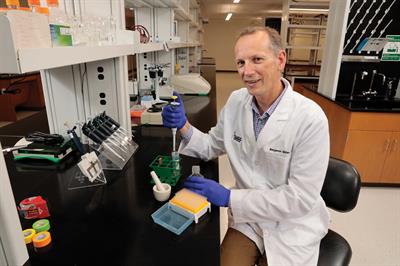 His expertise in using stable isotopes leads him to
step beyond transcript data. For example, with polymerase chain reaction (PCR) and RNA-Seq, Miller notes that transcript data show the nucleus of the cell saying, “This is what should happen.” He instead asks, “What actually happens?”
His expertise in using stable isotopes leads him to
step beyond transcript data. For example, with polymerase chain reaction (PCR) and RNA-Seq, Miller notes that transcript data show the nucleus of the cell saying, “This is what should happen.” He instead asks, “What actually happens?”
To find out, Miller and his lab team at OMRF measure the making of proteins and their turnover rate. He’s exploring such factors because, when it comes to aging and muscle, he views a lot of the status quo as contradictory. He aims to resolve those contradictions.
An analogy illustrates Miller’s precision in looking for a solution to aging in muscle: Think of muscle as a smoothie, he says. Take a sample, and you get a mishmash mix, which isn’t helpful when you’re wondering about the possible power of the individual “ingredients.” Miller wants to understand the individual contributions of the blueberries, the bananas and the strawberries, so to speak. So, he has started extracting the individual cell types from muscle to study their protein turnover. He’s doing similar work with brain cells.
Proteins are important because they accumulate damage and can’t be fixed, Miller explains. To keep the body young, you have to turn over proteins and make new ones repeatedly. That is why exercise is important—you adapt to that exercise by making proteins that help you. Understanding the protein remodeling process could point to aging remedies beyond exercise.
Miller’s published work with metformin has attracted attention recently, he says, thanks to an upcoming clinical trial investigating the anti-diabetic drug’s ability to slow aging. No drug has yet been proven to do so. One would think that with metformin’s positive effect and exercise’s positive effect, a combination of the two would produce enhanced positive outcomes. Under some conditions, this may not be true, according to Miller’s investigations. In fact, the two positives could be a negative. His earlier data show that some people have negative outcomes taking metformin and exercising. He and his team now have an ongoing clinical trial further addressing the combination.
“If a drug has no effect in some people, that’s OK. But if it actually has an inhibitory effect, that is not OK, and we need to know,” Miller says.
Mentoring Others
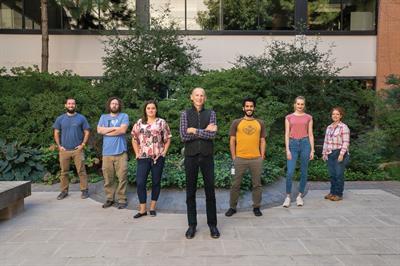 Being a mentor has been important to Miller
over the years. He has mentored undergraduates through junior faculty, and his lab has a steady state of four to seven trainees at any given time. He also serves as a mentor on many training awards and career development awards for young scientists
outside his lab, and he has started junior faculty mentoring programs at both his previous and current institutions.
Being a mentor has been important to Miller
over the years. He has mentored undergraduates through junior faculty, and his lab has a steady state of four to seven trainees at any given time. He also serves as a mentor on many training awards and career development awards for young scientists
outside his lab, and he has started junior faculty mentoring programs at both his previous and current institutions.
“It is hard to say why this is so important to me. I think part of it has to do with the mentoring I received along the way. I benefited so much from my PhD mentor, George Brooks, and I want to do for others what he did for me,” Miller says. “I want to help the trainees be the best they can, which is often greater than what they think is possible.”
A Clear Head for the Science
When he arrived at the Aging and Metabolism program at OMRF, Miller took a pause of sorts. It was September 2018, and he had moved his lab from Colorado State University, where he was a professor of health and exercise science. He looked back over his career and education and mulled past and present projects with an eye toward translational research.
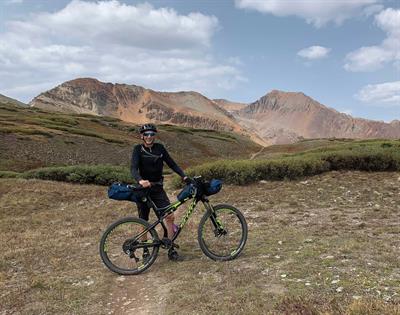 “The time allowed me to sit down and say, ‘OK, what is my focus?’ What is it that I want to do, and how are we going to do that in ways we’ve never done before?” Miller says. Having the time to do that was “liberating,”
he says.
“The time allowed me to sit down and say, ‘OK, what is my focus?’ What is it that I want to do, and how are we going to do that in ways we’ve never done before?” Miller says. Having the time to do that was “liberating,”
he says.
Cycling sparks a similar freedom. Miller rarely competes in standard sanctioned bike races, instead challenging himself with endurance races such as a 24-hour mountain bike race. He cycles 10 to 15 hours a week. “On the rides, I just get in my head and think things through,” he says. “You have to make time for things—biking, cooking, other things you enjoy—as a counterbalance to have a clear head for the science.”
The Physiologist Magazine
Read the Latest Issue
Don’t miss out on the latest topics in science and research.
View the Issue Archive
Catch up on all the issues of The Physiologist Magazine.
Contact Us
For questions, comments or to share your story ideas, email us or call 301.634.7314.
I found that researching suits the way I think—a lot of ‘big picture,’ lots of moving parts, integrating multiple ideas—and the research process is really how you get to dig into physiology.
Benjamin Miller, PhD


